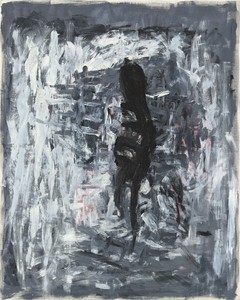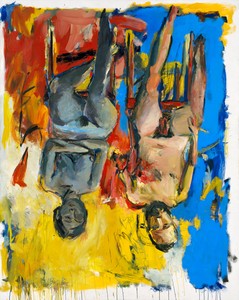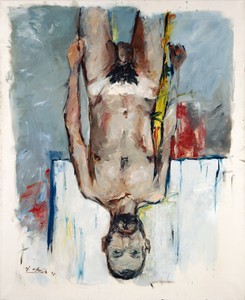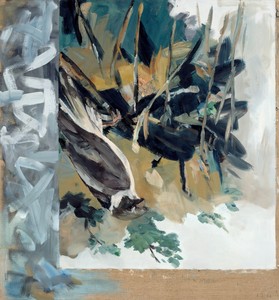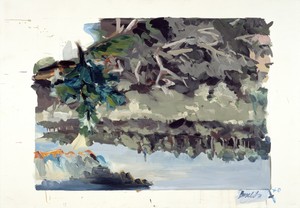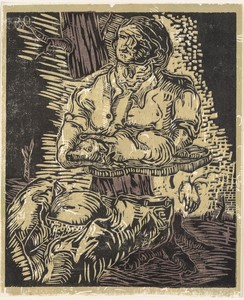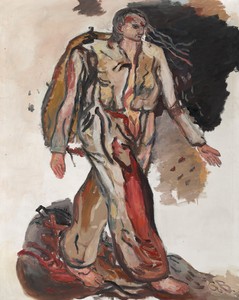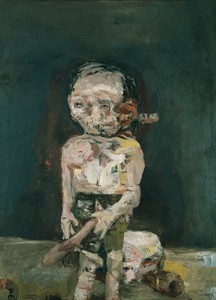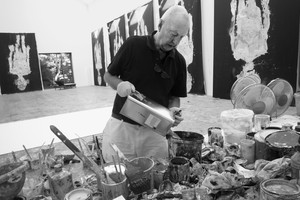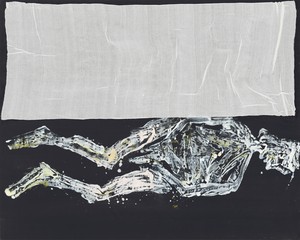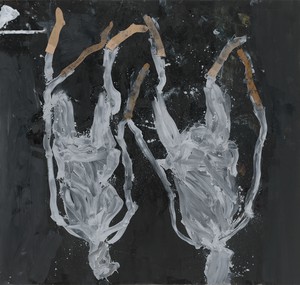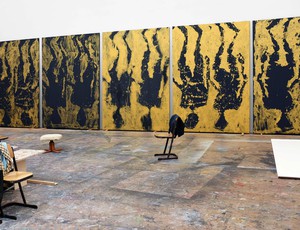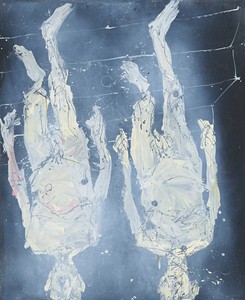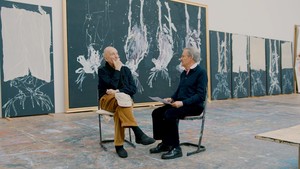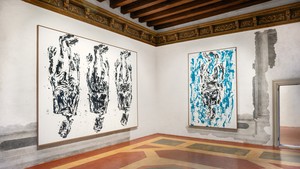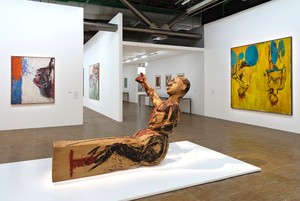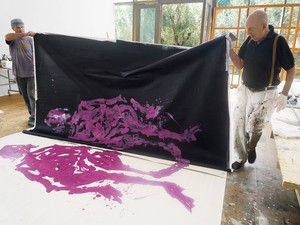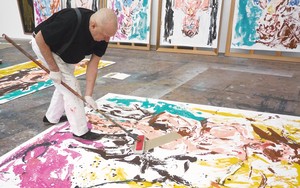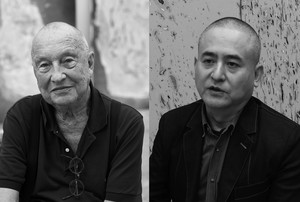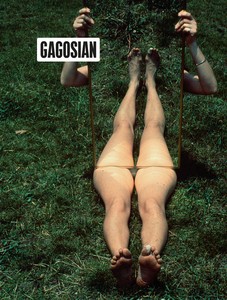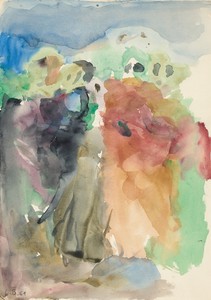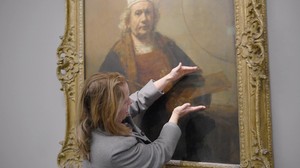This idea of “looking toward the future” is nonsense. I realized that simply going backwards is better. You stand in the rear of the train—looking at the tracks flying back below—or you stand at the stern of a boat and look back—looking back at what’s gone.
—Georg Baselitz
German painter, printmaker, and sculptor Georg Baselitz is a pioneering postwar artist who rejected abstraction in favor of recognizable subject matter, deliberately employing a raw style of rendering and a heightened palette in order to convey direct emotion. Embracing the German Expressionism that had been denounced by the Nazis, Baselitz returned the human figure to a central position in painting.
Born Hans-Georg Kern in Deutschbaselitz, Saxony, Germany, Baselitz attended the Hochschule für Bildende und Angewandte Kunst in East Berlin, from which he was expelled in 1957 for “sociopolitical immaturity.” He then moved to West Berlin, where he attended the Hochschule der Künste and completed his postgraduate studies in 1962. It was during this time that he changed his surname to Baselitz. From his youth, Baselitz had been interested in the German Expressionists’ use of “primitive” sources such as folk art, children’s art, and art of the mentally ill. To assert his independence from popular art of the postwar years, Baselitz and fellow artist Eugen Schönebeck wrote the so-called “Pandemonic Manifestos” (1960–62), a violent and shocking expression of the frustration of working in postwar Germany. In 1963 Baselitz had his first solo exhibition, which was an immediate scandal: the painting Die große Nacht im Eimer (The Big Night Down the Drain) (1962–63), depicting a distorted figure holding an oversized phallus, was removed from the exhibition due to charges of obscenity and not returned to Baselitz until the conclusion of a lengthy trial. In 1965 Baselitz turned to the subject of “heroes.” Painted in thick impasto, the Helden (Heroes) (1965–66)—also known as the Neue Typen (New Types)—portray figures standing within natural landscapes. Disheveled and fragmented, these war-torn figures elicit an emotional response in the viewer as they evoke the events of recent history.
In 1969 Baselitz began to paint and display his subjects upside down in order to slow down his process of painting as well as the viewer’s comprehension of the motif. These iconic paintings, depicting inverted figures, landscapes, and still lifes, achieve a form of abstraction while maintaining figuration. Through the 1980s, his work took on an added density as he further employed a wide range of formal and art historical references, including the paintings of Edvard Munch and Emil Nolde. Concurrently, he began creating large-scale sculptures made of painted wood, presenting these works for the first time at the 1980 Biennale di Venezia, where he showed Modell für eine Skulptur (Model for a Sculpture) (1979–80).
The paintings that Baselitz produced between 1990 and 2010 marked another shift in his practice, displaying a more linear and abstract approach to the figure. In the Remix series (2005–08), Baselitz revisited his earlier works, graphically re-presenting his prior subjects such that their subtle meanings and technical innovations were made more explicit. In 2015 Baselitz’s Avignon (2014) paintings—a suite of eight towering nude self-portraits—were featured in the Biennale di Venezia. The following year related self-portraits with spectral figures were presented at Gagosian, West 21st Street, New York. In 2018 a large retrospective of Baselitz’s work was presented at the Fondation Beyeler, Riehen/Basel, Switzerland, and at the Hirshhorn Museum and Sculpture Garden, Washington, DC.

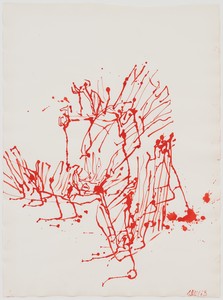
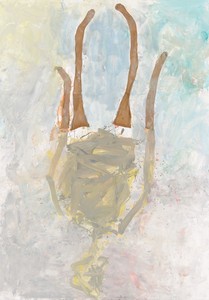

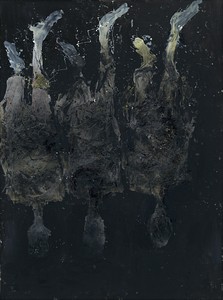
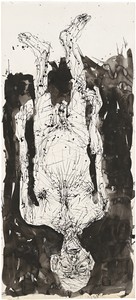
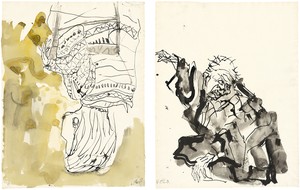
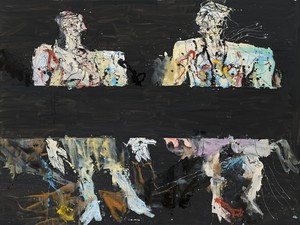

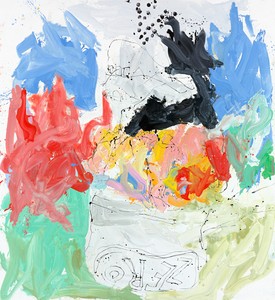
![Georg Baselitz, Franz Pforr Ganz Groß (Remix) (Franz Pforr Very Big [Remix]), 2006. Oil on canvas, 118 ⅛ × 157 ½ inches (300 × 400 cm) © Georg Baselitz](https://gagosian.com/media/images/artists/georg-baselitz/a-bc4EuUE7TN_300x300.jpg)
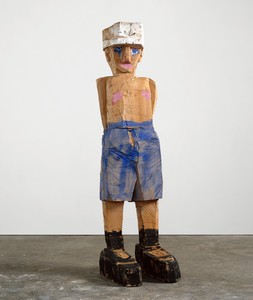
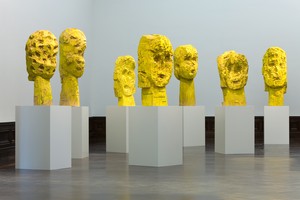
![Georg Baselitz, Orangenesser (IX) (Orange Eater [IX]), 1981. Oil and tempera on canvas, 57 ½ × 44 ⅞ inches (146 × 114 cm) © Georg Baselitz, 2018. Photo: Friedrich Rosenstiel, Köln](https://gagosian.com/media/images/artists/georg-baselitz/OjZwYEPi3Kxa_300x300.jpg)

